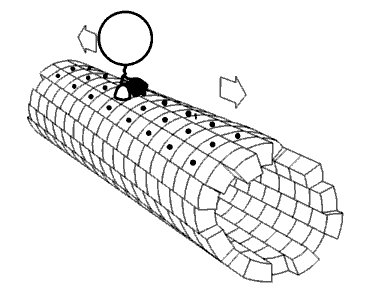
Photo from academic.microsoft.com
Giant plasma membrane vesicles (GPMVs) are unilamellar bodies that can be easily isolated from mammalian cells. SNAP-tag is a protein tag which binds covalently with benzylguanine (BG) derivatives, and is… Click to show full abstract
Giant plasma membrane vesicles (GPMVs) are unilamellar bodies that can be easily isolated from mammalian cells. SNAP-tag is a protein tag which binds covalently with benzylguanine (BG) derivatives, and is also capable of being fused to a protein of interest. Currently, specifically anchoring cellular material remains a challenge for bioengineering. The purpose of our project was to create a benzylguanine-covered surface to immobilize GPMVs expressing SNAP-tag fused to A2A, a G-protein coupled receptor. The ability to anchor vesicles from mammalian cells could be instrumental for the development of functional biosensors. Using this novel anchoring system, a wide variety of compounds could be quickly detected via binding to an exogenously expressed protein of interest within the same membrane environment. SNAP-tag fused A2A protein successfully expressed in HEK cells
Journal Title: Biophysical Journal
Year Published: 2018
Link to full text (if available)
Share on Social Media: Sign Up to like & get
recommendations!